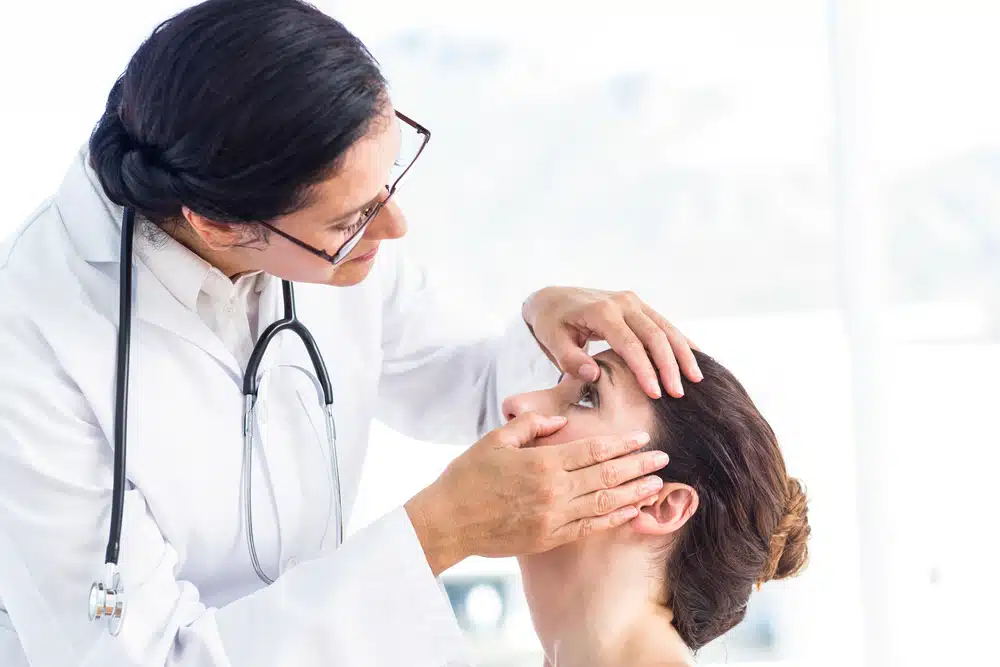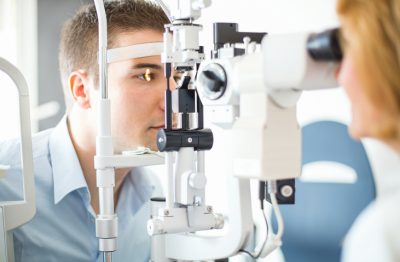Compassionate Eye Doctor: Expert Care for Riverside Residents
Compassionate Eye Doctor: Expert Care for Riverside Residents
Blog Article
The Comprehensive Eye Exam: What to Expect Throughout Your Visit to the Eye Physician
A visit to the eye physician for a thorough eye exam is more than a routine examination; it is a critical step in protecting your aesthetic wellness. From the first conversation of your clinical background to the precision of the aesthetic skill examination, each part of the exam offers a certain function. What specifically takes place throughout the eye wellness evaluation, and exactly how does it influence the prescription procedure? Recognizing these components is essential for those that desire to preserve ideal eyesight. As we explore each component, the importance of follow-up suggestions will certainly additionally come to be clear.
First Examination
The preliminary appointment during an eye test functions as a vital foundation for recognizing a client's aesthetic health and wellness demands. This phase sets the tone for the entire assessment process, permitting the optometrist to gather essential info concerning the individual's case history, way of living, and certain vision concerns. By diligently evaluating any kind of pre-existing conditions, drugs, or previous surgical treatments, the eye treatment professional can tailor the evaluation to resolve specific requirements properly.

Additionally, the preliminary assessment is a chance for individuals to voice any type of issues or questions, fostering a collaborative relationship with their doctor. This interaction not only makes certain that the patient feels informed and comfy however likewise empowers them to participate proactively in their eye wellness monitoring. Jointly, these discussions make it possible for the optometrist to develop an individualized assessment plan, ensuring optimum care and precise medical diagnosis.
Visual Skill Examination
Beginning the core components of an eye assessment, the visual acuity examination is developed to analyze the sharpness and quality of a client's vision. This critical examination helps figure out how well an individual can recognize letters or signs at a standard distance, normally using a Snellen graph (Eye Doctor). The graph makes up rows of letters that decrease in size from top to base, with the client placed at a popular distance of 20 feet
Throughout the test, the person is asked to cover one eye and check out aloud the tiniest line of letters they can see plainly. This procedure is duplicated for the various other eye. The outcomes are tape-recorded as a fraction, with 20/20 vision suggesting regular aesthetic skill-- where the client can see at 20 feet what an individual with regular vision can see at that distance.
The aesthetic acuity test additionally determines possible refractive errors such as astigmatism, hyperopia, or myopia, which might require rehabilitative lenses. By developing a baseline of visual performance, the test is an essential analysis tool that assists the eye treatment professional in developing an ideal therapy plan tailored to the client's one-of-a-kind visual requirements.
Eye Health Evaluation
Adhering to the visual skill examination, a comprehensive eye health assessment is conducted to ensure the total health of the eyes. This critical sector of the eye test includes a detailed analysis of both the exterior and interior structures of the eye. The ophthalmologist or optometrist starts by checking out the eyelids, cornea, conjunctiva, and sclera for any kind of indicators of infection, swelling, or irregularities. Utilizing specialized equipment like a slit lamp, the practitioner gains a magnified sight of the eye's makeup, making it possible for thorough examination.
Following, attention changes to the internal frameworks. Through the usage of ophthalmoscopy or fundus digital photography, the retina, optic nerve, and blood vessels are meticulously examined. This action is essential for identifying problems such as retinal detachment, glaucoma, or diabetic retinopathy. In a lot of cases, pupil extension is performed to improve presence of the internal eye structures, although this might result in momentary light level of sensitivity for the client.
In addition, intraocular pressure is measured to screen for glaucoma danger. This is usually done utilizing tonometry, which can identify elevated stress levels that may recommend possible damage to the optic nerve. Collectively, these assessments develop a thorough evaluation to keep ocular wellness.
Refraction and Prescription
Just how does one make sure ideal vision? An essential action depends on the procedure of refraction and getting an accurate prescription. Refraction is a sophisticated procedure conducted by eye care professionals to identify the accurate lens power needed to fix refractive errors such as myopia, hyperopia, presbyopia, and astigmatism. The goal of this procedure is page to analyze just how light bends as it travels through the eye, permitting the expert to establish whether rehabilitative lenses are needed for enhanced visual acuity.
Throughout the refraction process, the person is asked to browse a phoropter, a device which contains different lenses. The professional will systematically alter these lenses and ask the client to contrast clearness in between choices till the very best possible vision is accomplished. This treatment is essential in crafting a precise prescription that defines the proper lens power for eyeglasses or call lenses.
The prescription derived from this treatment not only enhances vision yet additionally works as a structure for selecting ideal restorative eyewear. It is important to make sure that prescriptions are frequently updated, as changes in vision can take place in time, stressing the value of routine eye assessments. This meticulous focus to detail aids maintain clear, comfortable vision in every day life.
Follow-Up Referrals

Throughout a follow-up go to, the eye physician will certainly carry out a series of examinations to examine aesthetic skill and check for any kind of adjustments in vision that might demand an upgrade to the prescription. Additionally, the follow-up offers a chance to talk about any kind of pain or issues experienced with current eyeglasses. Changes can be made to guarantee convenience and efficiency, whether via lens alteration or frame modifications.
For clients with recurring problems such as glaucoma, diabetes-related eye issues, or macular deterioration, even more regular follow-ups might be needed. These visits are essential for managing and potentially slowing down the development of eye disease. Following these referrals can substantially add to keeping visual health and wellness and avoiding lasting difficulties.
Verdict
The useful site comprehensive eye examination is a crucial procedure for maintaining visual health, including a comprehensive assessment of case history and vision concerns. Secret parts include the visual acuity test, which examines vision clearness, and the eye health and wellness assessment, which examines the general condition of the eyes. Refraction examinations help identify the precise lens prescription essential for optimal vision modification. Follow-up referrals offer guidance for ongoing eye treatment, guaranteeing that any kind of potential problems are resolved immediately and efficiently.
A visit to the eye medical professional for a thorough eye test is more than a routine examination; it is a critical step in protecting your visual health and wellness.Kicking off the core elements of an eye assessment, the aesthetic skill test is developed to assess the sharpness and quality of a patient's vision.Complying with the aesthetic skill examination, a detailed eye health and wellness assessment is performed to make sure the general wellness of the eyes. These sees permit the eye care expert to keep an eye on changes in vision, update prescriptions, and examine the general wellness of the eyes. Trick elements include the visual skill test, which reviews vision clearness, and the eye wellness evaluation, which examines the overall condition of the eyes.
Report this page